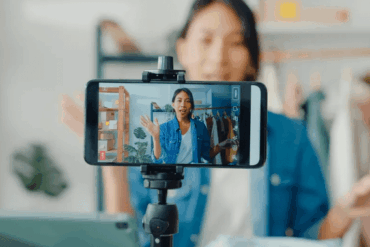With this dating profile setup strategy, you may never need to launch one.
My clients love to obsess over the perfect profile pic, the cheekiest bio prompt, and whether their height should include the extra two centimetres they gain with sneakers on.
But the problem isn’t your profile. It’s what your life isn’t giving you to work with.
It’s a reality check that may hurt for a second but help for a lifetime. Because building a dating profile isn’t just a marketing exercise; it’s a mirror. And if you do it properly, it becomes one of the clearest, fastest ways to spot what’s missing, misaligned, or quietly holding you back in your dating life. Even if you never launch it.
Most people think they need better pictures or prompts. What they actually need is a better sense of self.
Daters want to know, “How do I fix my profile?”
But the better question is, “What am I expecting my profile to compensate for?” Because when you sit down to build a dating profile, you’re not just picking cute photos and witty punchlines. You’re asking three bigger questions:
-
Who am I?
-
How do I show that?
-
What kind of life do I want to share with someone?
Most people answer with generic filler like “coffee,” “travel,” and “fitness,” then scroll back to 2019 to find one photo they don’t hate.
That’s not strategy. That’s smoke and mirrors. And you’re not curating a connection, you’re covering for the gaps. The real question isn’t what to write; it’s why your life isn’t giving you better material to work with.
And if that’s the case, it’s not your profile that’s out of sync. It’s the gap between how you’re showing up and how you want to be seen.
Let’s close it.
Step One: Build Your Brand Themes
Start by choosing three or four personal themes. Think of them as identity shortcuts that show:
- Who you are
- How you spend your time
- What makes you interesting
They don’t need to be deep, but they need to be real. Example: “Seinfeld-obsessed, podcast binging, coffee snob, always training for my next marathon.” Is that your entire personality? Hopefully not. But it gives someone a way in.
Your themes aren’t just content ideas. They’re a filter. If your life can’t back them up, your profile shouldn’t lead with them.
Step Two: Let Your Calendar Call You Out
Here’s the step most people skip although it’s the part that changes everything.
Open your calendar. Look at the past two weeks, and the next two. Now…
- Grey out the non-negotiables (work, family, life admin).
- Highlight the green: your actual free time.
Now ask: How much of that green time reflects your brand themes?
- “Fitness freak,” but haven’t trained in a month?
- “Nature lover,” but haven’t left your postcode?
- “Social butterfly,” but spent every weekend doom-scrolling?
If your calendar doesn’t match the life your profile is promoting, that gap is your work. The disconnect is costing you, not just in dating, but in how you feel about your own life.
This is where behavioural psychology meets dating reality. Your weekly actions teach your brain who you are. If your calendar doesn’t line up with your values, you create internal tension. And that tension kills confidence.
It’s called cognitive dissonance, and it doesn’t just feel bad. It leaks out. People pick up on it. If your calendar doesn’t back up your profile, your dating pool won’t either.
So, no, you don’t need a better bio. You need to get yourself to the class, the gig, the game, the gallery, or whatever reflects the life you say you love. If you’re not doing it while you’re single, when exactly are you planning to?
Step Three: Create a Profile That Reflects, Not Compensates
Once your lifestyle is aligned, your profile doesn’t have to work so hard. And it won’t call you out on the first date for faking a fantasy life.
You’re not trying to sell yourself. You’re simply highlighting what already exists and making it easier for the right person to find their way in. Your photos become proof, not performance. Your prompts sound like you, and your energy feels grounded, not grasping.
This is identity-based motivation. When your external actions match your internal values, you stop relying on willpower and start moving with clarity. That’s what makes dating easier: not luck, but alignment.
The apps don’t reward perfection. They reward clarity. And clarity comes from living a life that doesn’t require over-explaining.
Final Takeaway
You’re not setting up a profile to get more matches. You’re setting it up to see whether your current life is actually worth matching with. To find the blind spots, check whether your habits reflect your hopes and ensure that when someone amazing does come along, you’re already living the kind of life they’d want to be part of.
Because the most attractive thing you can offer isn’t a perfect prompt but a life that feels good to be in. When that’s in place, this profile strategy finally starts working for you, whether you’re actively swiping or not.
By Sera Bozza MA
Sera Bozza, MA, is an evidence-based dating coach, dating columnist and “dating expert” (Tinder’s words). Online: serabozza.com, X, LinkedIn, Instagram



